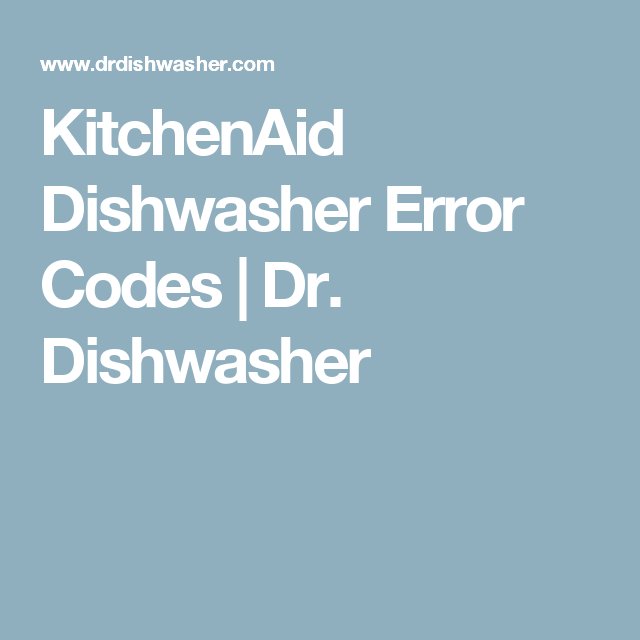
The “SE” error code on a KitchenAid dishwasher typically indicates an issue with the machine’s *sensor* or a more general communication error within the system. Think of it as your dishwasher’s way of waving a small red flag, signaling that something might not be working right. Much like a car’s check engine light, it’s not something to dismiss lightly. While it might not spell immediate doom, ignoring it can lead to bigger issues down the line, possibly transforming a minor inconvenience into an expensive repair.
Understanding the “SE” Error Code
Let’s dive a bit deeper into what this pesky “SE” error actually implies. Essentially, it could mean several things, mostly revolving around a failing sensor or a communication glitch within the dishwasher. Imagine if your senses suddenly stopped working correctly — you wouldn’t be able to function properly, right? Similarly, this error could mean your dishwasher can’t detect water levels correctly, or it’s receiving mixed signals from its internal components.
Such issues can arise from a variety of causes. Sometimes, it’s as simple as a loose wire or a bit of dirt interrupting a signal. Other times, it might be indicative of a worn-out sensor that needs replacing. Either way, understanding that this isn’t just a minor hiccup but a call for attention can save you time and trouble. Much like ignoring a toothache can lead to a dental crisis, overlooking this code could culminate in more serious malfunctions.
So, what’s the next step once you see this error? First off, don’t panic. Instead, power off the appliance and consult the manual for a quick reset procedure. Often, a simple reset can fix minor glitches, but if the error persists, it’s time to consider more hands-on solutions or seek professional help.
Common Causes and Effects of the “SE” Error
Now, you might be wondering, “What exactly causes this ‘SE’ error to pop up?” One common culprit can be a dirty sensor, similar to how dust on your camera lens can blur your photos. Over time, mineral deposits or food particles can coat the sensors, interrupting their ability to accurately read signals. Regular cleaning and maintenance can often keep this issue at bay.
Another frequent issue might be a wiring problem, akin to a faulty string of Christmas lights. A disconnected or loose wire within the machine can disrupt communication between the components, thus triggering the error. This is where having a basic understanding of your appliance’s innards can be handy, but for most beginners, it’s advisable to call in a repair technician to trace and fix such problems without risking further damage.
The effects of ignoring the “SE” error are far from negligible. Apart from the obvious inconvenience of interrupted dishwashing cycles, leaving the problem unaddressed can escalate into larger, more costly issues. Water may not be pumped in or out correctly, leading to poor cleaning performance or even water damage to your kitchen floor.
Solutions and Preventative Measures
So, you’ve identified the dreaded “SE” error on your dishwasher — what now? Here’s a straightforward game plan to tackle the issue. Start by checking for any visible signs of dirt or residue on the sensors, usually located near the base of the machine. Cleaning them gently with a soft, damp cloth might resolve simple detection problems.
If the error persists, consider resetting the dishwasher. Most contemporary KitchenAid models offer a reset procedure in the user manual involving pressing and holding certain buttons. This can oftentimes clear minor software glitches that might be causing the error. However, if the problem remains unsolved, don’t hesitate to contact a professional. Tinkering around without a clear understanding can sometimes do more harm than good.
To prevent future occurrences, make a habit of cleaning your dishwasher regularly. Run an empty cycle with a cup of vinegar now and then to tackle mineral build-up. Also, inspect the internal parts for wear and tear at least every few months. This proactive approach can significantly extend the life of your appliance and minimize the odds of running into error codes.
Engaging with the “SE” error code thoughtfully, rather than ignoring it, keeps your dishwasher in peak condition and saves you from potential headaches and hefty repair bills. Remember, just like in life, it’s often the small signs we should never ignore.